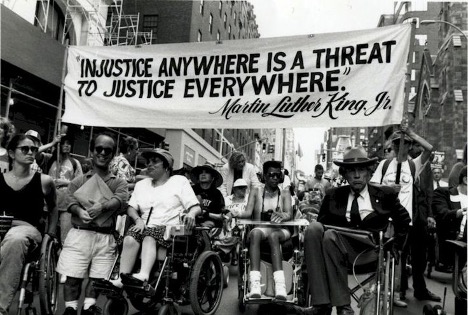 Center for Instructional Technology and Training
Center for Instructional Technology and Training

There are big changes coming to higher education: The Department of Justice has updated its regulations to Title II of the Americans with Disabilities Act to clarify the requirements for digital access to resources on the websites of public entities, which include state universities. Under the new regulations, all online content must be accessible to people with disabilities (if you are interested in the technical details, accessibility is being defined as meeting the standards for WCAG 2.1 AA). For colleges and universities, this will also apply to course materials, including documents that you have uploaded to Canvas, prerecorded lecture videos, and third-party content like online textbooks.
Although it may seem intimidating, this is a wonderful opportunity to be part of an effort that will make higher education less exclusionary for students with disabilities. Since this might take some time, I recommend getting started now on reoccurring courses. This is how to begin if you are new to accessibility:
Make videos you can understand with the sound off or your eyes closed: All your videos must be captioned. This can be done on your own through some video platforms, although it is essential to edit all captions that are automatically generated. You may also qualify for centrally funded captioning through UFIT. In addition to captions, instructional videos should contain all of the content in the audio whenever possible. This means you should be able to listen to a video with your eyes closed without losing any information. For example, if you have a graph on a PowerPoint slide, you can start by identifying the type of graph and the axes before delving into a longer explanation. If you have videos with visual content that is not repeated in the audio, they will need an audio description, which is an additional audio track that describes visuals during pauses in the dialogue.
Pay attention to how you use color: If the text and background colors are too similar in terms of how dark or light they are, it can be hard for somebody with low vision to read the text. You can check the contrast to make sure your text is readable. Additionally, remember that not everybody can distinguish colors. If you’re using color to convey meaning (like changing font color for emphasis or using different colors for different variables in a graph), add an additional indicator (making the font bold or adding a simple pattern).
Start replacing PDFs: While PDFs can be a convenient way of sharing a document, they require effort, skills, and specific software to make sure they are readable for people using assistive technology. If you are just starting your accessibility journey, I recommend looking for opportunities to replace PDFs in your courses with different formats, such as a hyperlink to an HTML version of a journal or leaving your syllabus as a Word doc.
Ask vendor representatives about the accessibility of their products: Are you using third-party tools that have been linked from or embedded in Canvas? We are responsible for making sure that the vendors we work with are providing an equitable experience to our students. If you rely heavily on things like textbook publisher platforms and Canvas plug-ins, I recommend talking to your vendor rep, and making sure they are aware of the need for accessible products.
Educate yourself: Digital accessibility is a skill. It takes a long time to master, so now is a great time to look for resources and trainings that will help you. You don’t need to be an expert, but it’s everyone’s responsibility to acquire a baseline level of knowledge about it if you create any content. Here are some that I recommend:
Spread the word: One of the most impactful things you can do is make sure you’re not the only person in your office working on this. If you want to be a leader in making UF a better place for students with disabilities and protecting the university from liability, share this information with your colleagues so that they can be proactive as well. You may even find somebody who wants to learn with you, so you can share resources and check in on your progress.
I know that this may feel like a Herculean task. I won’t pretend that these regulatory updates won’t involve some work, but it will be worth it! These regulations ensure that the ADA remains relevant in a world where Internet access is a basic necessity. I’m excited to see the landscape of higher education become more welcoming and usable for people with disabilities. UFIT is having a lot of conversations about how to support these efforts, so please keep an eye on this space for updates.
Image Credit: “The Disability Independence Day March”," in New York City Civil Rights History Project, Accessed: May 24, 2024, https://nyccivilrightshistory.org/gallery/disability-independence-day-march.
Tags: Accessibility, Faculty Development, Online Teaching, Professional Development, Student Success, Teaching, Technology, UFIT, Video